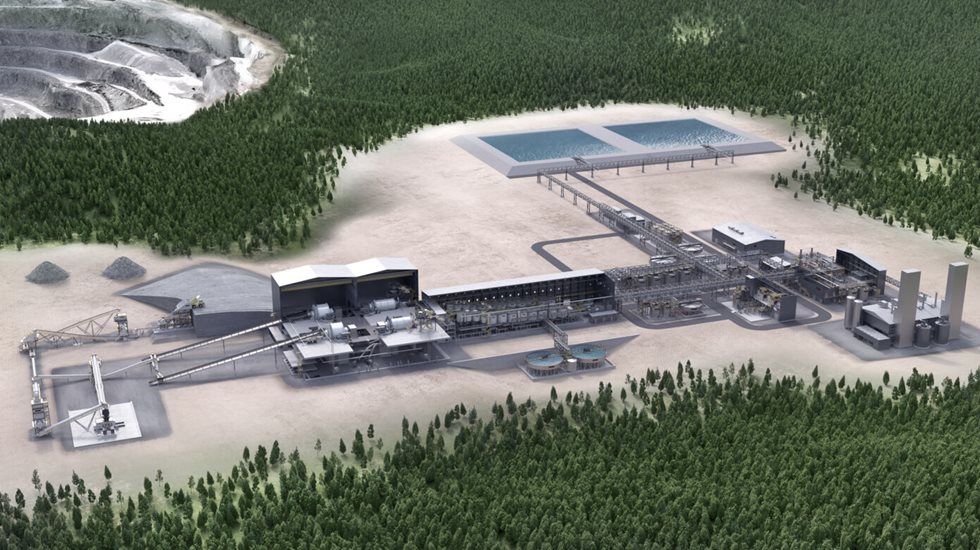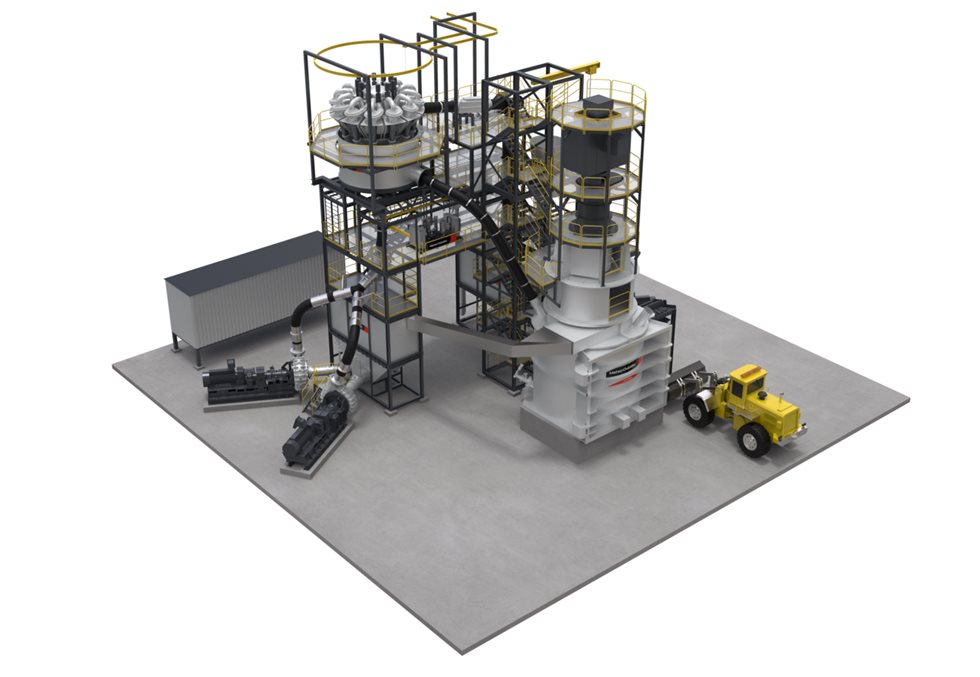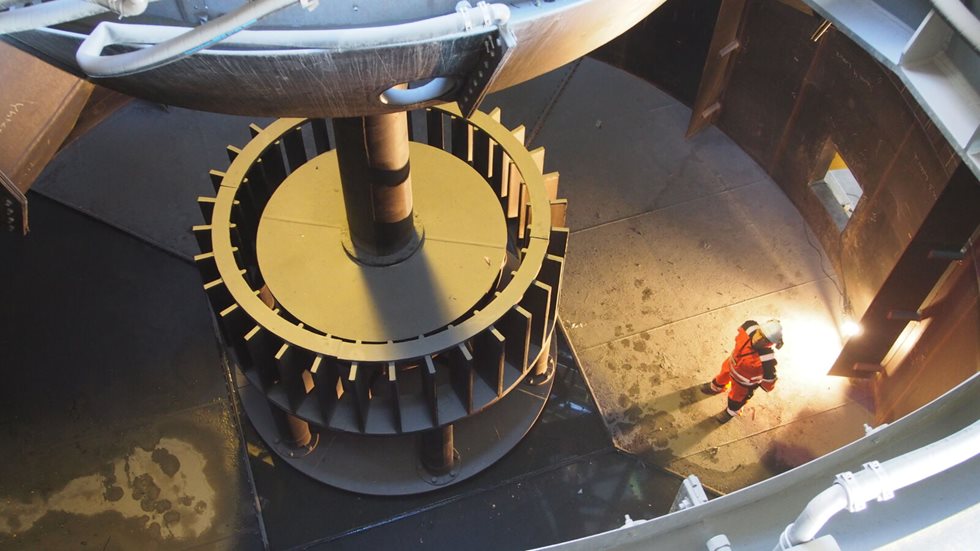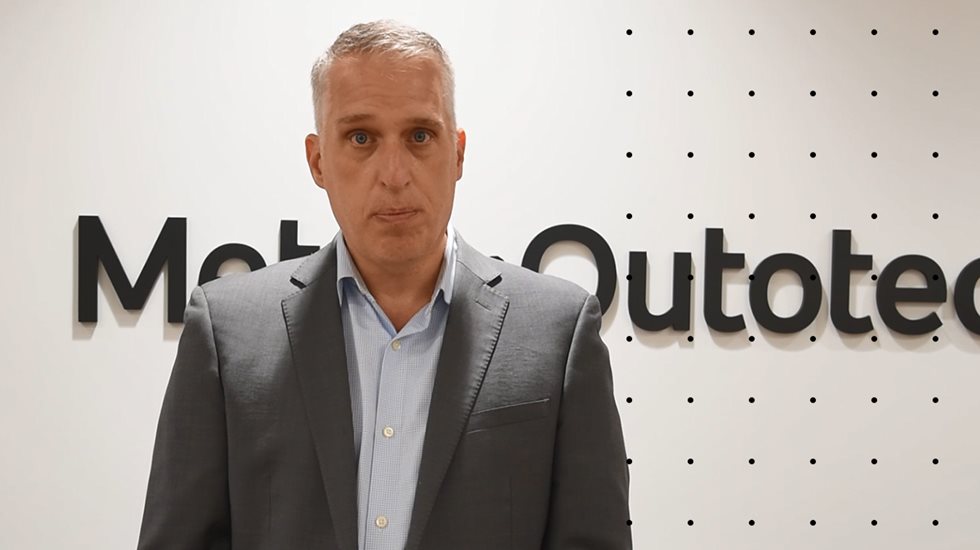Planet Positive is a way of looking at sustainability in a holistic way. We are not just focused on our footprint – that is, the impact of our own operations on the environment - but on our handprint as well. Metso Outotec’s handprint encompasses all the products and services we offer that make a positive impact on the environment and on people.
Boosting energy efficiency for comminution solutions

Planet Positive offers significant energy savings and CO2 emission reductions
According to the Coalition for Eco-Efficient Comminution (CEEC), up to 3% of the world’s electricity is used in comminution, the breaking and grinding of rocks. Metso Outotec’s comminution portfolio includes products like the HRC™ HPGR, the Vertimill® and the HIGmill™ which directly reduce the amount of energy required in comminution. For example, primary grinding in the HRC™ HPGR can reduce comminution energy requirements by up to 30% compared to a conventional SAG mill. Similarly, Vertimills and HIGmills™ have been thoroughly shown to save 35% or more on fine grinding energy. Emerging technologies, like ore sorting and early rejection of waste materials, can also reduce energy intensity by reducing the amount of ore that needs to be processed for a given amount of final product. By helping to reduce the energy required in comminution, Metso Outotec’s portfolio is directly reducing our customer’s greenhouse gas emissions and contributing to a more sustainable future.
Our comminution portfolio also has positive impacts on the indirect, or embodied, emissions created by our customer’s operations. Grinding media is a perfect example of embodied emissions. Steel media, typically balls, is a key consumable in comminution processes like SAG milling and ball milling. Production of steel media requires large amounts of energy to mine and refine iron ore, to melt steel and shape the media. Estimates from the World Steel Council show that on average, producing one kilogram of raw steel generates 1.8kg of CO2. Depending on the point of manufacture and the point of use, emissions from shipping the media to site can also be substantial. On a kg CO2 per kWh basis, Vertimills typically consume 20% less media than an equivalent ball mill. Factoring in the 35% reduction in grinding energy required, a Vertimill will consume approximately one half the grinding media compared to a ball mill. In 2020 alone, Metso Outotec’s installed base of Vertimills saved over 121 thousand metric tons of CO2 embodied in grinding media alone. Direct energy savings from our installed base of Vertimills saved a further 551 thousands tons of CO2 in 2020.

Advances with new products and process control play a key role
Of course, there are other areas where Metso Outotec’s portfolio can improve the energy efficiency of our customer’s operations. FloatForce is a novel impeller mechanism available as a retro-fit in large flotation tanks cells. The new impeller operates at a lower rotational speed, which consumes less energy. In 2020, it is estimated that FloatForce mechanisms worldwide saved over 420 thousand tonnes of CO2 emissions. A key additional benefit of this technology is improved metallurgical performance. Improved recovery in flotation means that more concentrate can be produced per tonne of ore, thereby significantly reducing energy intensity per tonne of concentrate.
Metso Outotec also leverages Advanced Process Control (APC) to reduce our customer’s energy needs. APC comprises sensors and regulatory control systems that can pro-actively optimize the operation of various parts of a concentrator. For example, on-line particle size analyzers working on a ball mill circuit can be used with APC’s control functions to tune the hydrocyclones and reduce overgrinding and wasted energy. Similarly, camera-based sensors are used to evaluate the formation and transport of froth in flotation cells, with changes in air flow and reagent dosage automatically adjusted to optimize recovery. As mentioned previously, improved recovery can lead to substantial energy savings and greater profits for our customers.

Sustainable services and wear parts – incremental improvements with high impact
Extending the life cycle of the equipment and optimizing industrial processes enables environmental efficiencies, such as increased energy efficiency, we can already take new technology elements and deploy them into old equipment. This is often through incremental improvement programs, where performance is optimized over time. This thinking is in the center of our sustainable services offering and is not limited to our own installed base.
Metso Outotec’s services sustainability thinking is based on our long and solid customer relationships and that’s why our customers’ trust us to propose what’s best and most sustainable for their processes. We improve while we wait for the transition to new technologies. The environmentally efficient services portfolio consists of:
- Upgrades and modernizations – we incorporate new technology into old equipment
- Lifecycle services – we optimize processes over time to help our customers manage potentially costly unplanned disruptions
- Process improvements – we improve utilization of assets; increase effective capacity and reduce the carbon footprint of our customers’ processes
- Repairs - we extend the equipment life to consume less.
Using the right wear parts is critical to protect equipment, and to ensure it operates at the highest possible level. Using long-lasting wear parts means less production, transportation, and replacement of products. Our optimized wear solutions help our customers lower their energy, water and fuel consumption as well as minimize material waste. For example, we have developed methods to separate rubber from steel and we can recycle worn parts, thereby avoiding parts being sent to landfill or left on-site. We also have solutions that greatly improve safety performance.
Metso Outotec is making great strides in reducing energy intensity and greenhouse gas emissions from our operations. But it is the handprint that our products have on our customers’ operations that have the biggest influence on meeting energy and greenhouse gas reduction targets. Through continued development of existing products like Vertimills and HRC HPGRs, together with advances in new products and process control, as well as continuing to improve our services and wear parts offering to better serve our customers’ individual needs, Metso Outotec is doing itspart to contribute to a more sustainable future.

